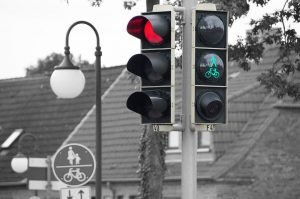As we embrace the increasing popularity of scooters here at FamilyHype, we can’t ignore the importance of safety. We want to help you to make the most of your scooter rides and to do so in a safe and responsible way. That’s why we’re here to guide you through the ins and outs of the comprehensive regulation of the scooter, so you can enjoy your scoot ride while being mindful of others.
We understand the thrill of the ride, the wind in your hair, the freedom you feel. But we also know that accidents can happen, and we want to help you prevent them.
From getting to know your scooter, essential protection gear, pre-ride checks, regulations of the road, and safe riding techniques, to weather considerations, parking welfare, handling emergencies, and regular maintenance – we’ll cover it all.
We believe that knowledge is power, and understanding these protocols can make your rides safer and more enjoyable. After all, we’re all here to have fun, but let’s also ensure we’re doing our part to keep ourselves, our kids, and others safe.
We’d love to hear your feedback about your scooter experience and any tips you have for staying safe on the road.
In addition to electric scooters, there are many other micro-mobility vehicles available, like electric bicycles, skateboards, and hoverboards. All of these have their own safety considerations, so it’s important to understand the mandates and regulations of each one before you hit the road.
At FamilyHype, we strive to empower you and your family with the knowledge and resources you need to stay safe while exploring your world.
Key Takeaways
- Importance of scooter safety and responsible riding
- Understanding the rules of the road for scooter riders
- Importance of safety gear essentials
- Regular maintenance and servicing ensure scooter reliability and safety
Know Your Scooter
Before you embark on your thrilling ride, it’s imperative you’re well-acquainted with your scooter’s features and capabilities. We understand that the allure of speed and freedom on an e-scooter can be irresistible, but protection should always take precedence.
It’s vital to comprehend your scooter’s unique operational nuances, from braking systems to control layouts. Tips from seasoned riders or manuals can be indispensable. Scooter customization isn’t just about aesthetics; it involves adjusting the vehicle to your comfort and skill level. Many people find that investing time in understanding and adjusting their scooter pays off in the long run.
Rider training can’t be overlooked either. It’s a precious opportunity to learn how the scooter responds in various situations, which will undoubtedly enhance your confidence and assurance on the road. Remember, we’re not just riders; we’re ambassadors of scooter precaution.
Having established a sound understanding of your scooter, let’s find a moment to delve deeper into the importance of protection gear essentials, another key aspect of responsible riding.
Protective Gear Essentials
Don’t even think about hopping onto your two-wheeler without gearing up with these essential protection items first! We understand the thrill of the ride, but security is paramount.
Let’s start with helmet types. Wear a helmet. An open-face helmet gives you a broad view and more ventilation but offers less protection than a full-face helmet. Full-face helmet wearing provide maximum protection, covering your face, head and jaw, but can be a bit more restrictive.

Next, let’s talk about protective clothing. To prevent road rash, a sturdy jacket and pants, preferably made of leather or strong synthetic material, are necessary. Gloves protect your hands, while sturdy boots shield your feet and ankles.
Safety should always be a priority before fun. That’s why gearing up is so important.
Now, let’s move on to what to look out for in your pre-ride safety checks.
Pre-Ride Security Checks
Ensuring your scooter is in its prime condition is as crucial as wearing the right safety gear, so let’s dive into the essentials of a pre-ride check.
A good look at your tires should be the first item on our list. A tire inspection can reveal any punctures, cuts, or signs of wear that could make your ride unsafe. So, take the time to physically touch and visually inspect your tires before hopping on.
Next up, let’s check out the braking system. Squeeze both brake levers, ensuring they operate smoothly and the brakes don’t stick. Remember, a well-functioning brake can be a lifesaver. We’re all about promoting safe and responsible riding, after all.
Ready? Great! Now, let’s move on to understanding the regulations of the road.
Regulations Of The Road
Let’s hit the highway now, armed with knowledge about the dos and don’ts for cyclists. Wearing a helmet is non-negotiable, and understanding road traffic signs is crucial. Signs aren’t merely colorful decorations on wheels; they guide us to ride responsibly, alert us to potential hazards, and ensure we respect other road users’ rights.
Remember always to yield to pedestrians. Hands-on the handlebars at all times ensures better control and safer interactions. Interacting with pedestrians courteously keeps everyone safe and reinforces a positive image of those riding a scooter. Armed with safety tips, it’s also our responsibility to signal our intentions clearly, to prevent confusion and accidents. Beyond just the helmet, ensuring you have the right safety equipment is essential for protection.
Observing these statutes not only makes our ride safer but also more enjoyable. So, with these guidelines in mind, let’s shift gears and prepare to delve into the art of mastering safe riding techniques.
Defensive Riding Techniques
Ready to level up your cycling game? Mastering safe techniques is your ticket to a smooth, seamless ride.
Let’s delve into two key areas: Defensive Driving and Rider Visibility. When riding, we need to anticipate possible dangers. This is where defensive driving comes in. It’s all about being aware of your surroundings, predicting potential hazards, and reacting promptly.

On the other hand, enhancing rider visibility is equally critical. We can do this by using bright, reflective clothing and equipping our scooters with lights and reflectors. This not only makes us visible to other road users but also boosts our confidence on the road. You should also wear knee pads for some extra protection.
By mastering these techniques, we’re not only ensuring our safety but also contributing to a safer environment for everyone.
Now, let’s move forward to understand how to safely navigate through traffic.
Navigating Traffic
Navigating through bustling traffic on your bike can be a real challenge, but with the right approach, it’s certainly not an insurmountable one. It’s all about being aware, being visible, and following the rules of the road. Here are some pointers:
- Always adhere to traffic signals even on the street sidewalk. They’re not just for cars, but for everyone on the road.
- Understand and use proper lane positioning. It can make a huge difference in your safety.
- Make eye contact with drivers when possible. It can help ensure they see you.
- Be predictable to other road users. Avoid sudden movements.
- Use only one hand signal to indicate your intentions.
Let’s remember, our safety and the safety of others depends on our responsible riding.
Now, let’s gear up to tackle another aspect of scooter safety: riding in various weather conditions.
Weather Conditions And Riding
Weather conditions can literally throw a wet blanket on your two-wheeled adventure, making it a slippery challenge to balance and steer. We understand how daunting it can be to ride in the rain, fog, or snow. Seasonal riding requires a heightened level of caution and weather preparedness. It’s crucial to check the forecast before embarking on a journey and always dress appropriately for the conditions.

Icy or wet surfaces and dry surfaces can increase the risk of car accidents. So, it’s important to reduce or slow speed, increase the distance between you and other vehicles, and avoid sudden braking. Remember, road safety is your responsibility too. Weather-related challenges don’t mean you can’t enjoy your ride. They simply mean we need to adapt and prepare.
Now, let’s discuss how to ensure your scooter is parked safely and securely.
Parking Your Vehicle Safely
Once you’ve conquered the open road and it’s time to dismount, finding a secure spot to park your two-wheeler can be just as crucial as any part of your journey.
We understand that safety doesn’t end when the ride does, so let’s talk about Scooter Locking Methods and Designated Parking Spaces. It’s not just about convenience, but also about preventing theft serious injury or damage.
Many public spaces offer designated parking slots specifically for scooters. Utilize them whenever possible. Additionally, secure your scooter with reliable locking methods; a strong lock can deter potential thieves.
Remember, we’re promoting a culture of safety, respect, and responsibility. Let’s ensure our rides are safe even when we’re not around.
Next, we’ll delve into how to navigate emergency situations while on your scoot.
Emergency Situations
Let’s not forget, emergencies can strike anytime, and it’s vital to be prepared when you’re out on your two-wheeler. Part of that preparedness involves understanding how to react in crisis situations.
We all hope it won’t happen, but if you ever find yourself in a dangerous situation, knowing how to respond can make all the difference. Emergency preparedness is about more than just having a first aid kit handy. It’s about knowing how to control your scooter in unexpected situations, being aware of your surroundings, and understanding basic emergency procedures. Crisis management is also crucial. Stay calm, assess the situation quickly, and take proper action.
Remember, safety isn’t just about preventing accidents. It’s also about knowing how to handle them when they occur.
Now, let’s shift our focus toward regular maintenance and servicing of your scooter to ensure its optimal performance.
Regular Maintenance And Servicing
Imagine the rush of relief you’ll feel when your two-wheeler performs flawlessly during a ride, all thanks to keeping it in tip-top shape through regular maintenance and servicing. It’s not just about improving performance, but also about ensuring your protection.
Investing in mechanical upgrades can significantly enhance your scooter’s reliability, providing you with smoother and safer rides. Regular scooter cleaning is also pivotal, as it helps prevent dirt and grime from impairing your scooter’s function.
Remember, being proactive in maintaining your scooter helps reduce the risk of accidents, and it’s an essential aspect of responsible riding. We understand the process may seem tedious, but the peace of mind of knowing you’re safe is invaluable. Never underestimate the power of regular scooter care.
Conclusion
We’ve covered a lot, haven’t we? From understanding our scooters to wearing bright colors for visibility, wearing the right protection gear, pre-ride check-ups, and the traffic laws of the road.
We also learned about riding in the rain, parking safely, handling emergencies, the importance of obeying speed limits, and navigating different weather conditions. Using hand signals effectively ensures that other road users understand our intentions.
Let’s remember, that riding scooters can be enjoyable, but being safe and responsible riders should always be our top priority. We at FamilyHype encourage you to stay safe, ride smart, and share your experiences and feedback with us for the benefit of other scooter riders.
Let’s enjoy the journey as we connect with our communities, explore the outdoors, and advance the scooter culture!
Frequently Asked Questions (FAQs)
